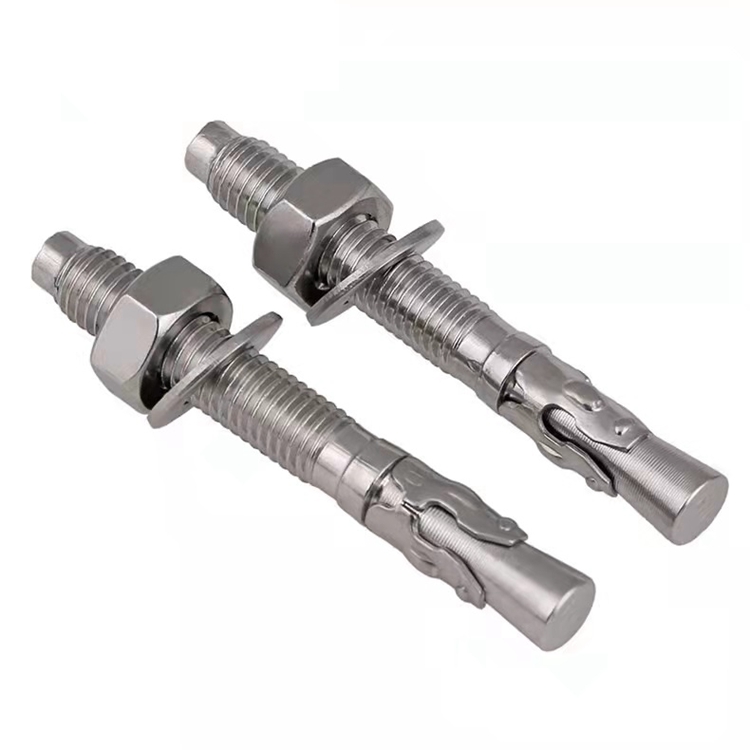Exporters of Rebar Nuts and Their Global Market Trends
Nov . 17, 2024 03:18 Back to list
Exporters of Rebar Nuts and Their Global Market Trends
The Global Market for Rebar Nuts Trends and Exporters
Rebar nuts, essential components in the construction industry, are integral to securing reinforcing bars (rebar) in concrete structures. These fasteners not only enhance the strength and stability of buildings and infrastructures but also ensure that they can withstand the test of time and various environmental conditions. As global construction activity ramps up, the demand for rebar nuts has surged, leading to a flourishing market for exporters.
Understanding Rebar Nuts
Rebar nuts are designed to fit standard rebar diameters and are typically made from materials like steel or high-strength alloy. They serve as a critical element in anchoring rebar to concrete, providing a robust connection that is essential for the structural integrity of a project. Depending on the specific application, rebar nuts can come in various sizes and grades, making them versatile components in construction.
The Rise of the Construction Industry
The global construction industry has seen unprecedented growth in recent years, driven by urbanization, population growth, and increasing infrastructure development. Emerging economies like India, Brazil, and Southeast Asian nations are experiencing rapid urban development, necessitating the use of quality construction materials, including rebar nuts. As construction activities increase, the demand for reliable and durable fasteners is more critical than ever, impacting the market dynamics faced by exporters.
Key Exporting Countries
Several countries have emerged as prominent exporters of rebar nuts in response to this growing demand. China, the leading producer of steel products, is at the forefront of the global rebar nuts market. Its extensive manufacturing capabilities and competitive pricing provide Chinese exporters with an advantage, allowing them to meet international standards while offering cost-effective solutions to buyers worldwide.
rebar nuts exporters

Other significant players in this market include the United States, Germany, and Japan, known for their high-quality manufacturing processes and innovative designs. These countries focus on producing specialized rebar nuts that cater to specific construction needs, such as seismic resistance or enhanced corrosion resistance.
Challenges Faced by Exporters
While the prospects for rebar nuts exporters are promising, they also face a range of challenges. Fluctuating raw material prices can impact profit margins, making it essential for exporters to develop robust supply chain strategies. Additionally, stringent regulations regarding material quality and environmental sustainability must be adhered to, particularly when exporting to developed markets.
Trade policies and tariffs also play a significant role in shaping the competitive landscape. Exporters must navigate these complexities while ensuring that they remain compliant with international trade agreements. This often requires a keen understanding of local markets and the ability to adapt to changing regulations.
Future Outlook
As infrastructure development continues to be a priority across the globe, the demand for high-quality rebar nuts is expected to grow. Exporters who can leverage technology and innovation will likely stay ahead of the competition, adapting their products to meet evolving market needs.
In conclusion, the market for rebar nuts presents significant opportunities for exporters worldwide. By understanding market trends, complying with regulations, and maintaining a focus on quality, they can capitalize on the growing demand driven by the global construction sector. As urbanization continues to rise, rebar nuts will remain a vital component in building the future.
Latest news
-
Premium Phosphated Drywall Screws Supplier | Durable, Rust-Resistant
NewsAug.27,2025
-
Reliable Wire Bolts Suppliers | Quality Zinc Plated Fasteners
NewsAug.26,2025
-
Wire Bolts Suppliers: Durable & Reliable Fasteners for Every Project
NewsAug.25,2025
-
Premium Cabinet Bolts Supplier | Wholesale & Custom Solutions
NewsAug.24,2025
-
Reliable Axle Nuts Supplier | Quality & Precision Fasteners
NewsAug.23,2025
-
Durable Bolts for Lawn Mower Handle - Top Supplier & Manufacturer
NewsAug.22,2025
